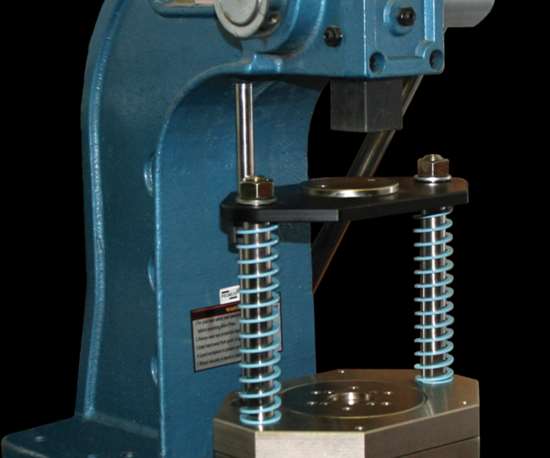Tiptoeing into Industry 4.0
Developers are making it easier to get started.
#iot
The Industrial Internet of Things (IIoT) is empowering a complete transformation of how stuff gets made. The root of the change is two-way communication between every part of the production process, with equipment being networked and providing information about various aspects of each of the machines—vibration measurement, temperature variation, motor current analysis, etc.—to be crunched upstream to improve production.
But while this so-called “Industry 4.0” capability is valuable, for some companies it is simply too expensive. So rather than having to replace equipment, some vendors are offering tools that can even provide manual equipment with up-to-date functionality.
Consult the Manual
Andy Joseph is a product development engineer at Promess Inc. (promessinc.com), a maker of automation-ready, IIoT-compliant press equipment and measuring systems. Earlier this year, an automotive supplier told Joseph that the company was being leaned on by its customer about low-volume assembly work it was doing on an arbor press: the customer wanted data about the performance of the operation.
The arbor press is manual. When used for simple, low-volume assembly tasks—such as joining hydraulic actuator valve components or putting dials onto dashboard-bound controls—it’s a low-cost solution. The arbor press even offers a benefit denied to powered and automated presses, Joseph says: “The user can actually feel the parts join through the press,” giving an immediate tactile sense of “how hard or fast the press is coming and should come down.”
Companies such as this supplier may be all in favor of automation for bigger jobs, but for ones like these, “they can't justify the expense of one of our presses or even a normal electromechanical actuator,” Joseph explains. And he discovered this supplier wasn’t the only one in such a situation, so he worked with his colleagues and developed the Smart Press Frame for manual presses, a simple device that fits under the descending press to do a number of things: It mechanically protects the press’s load cell from damage through overloading. It has upper and lower plates with pins for quick, easy tooling connections. And, of particular interest, it contains both a force and position sensor and Ethernet connectivity to a human-machine interface (HMI).
In other words, it is simple, economical, effective—and IIoT compliant.
Plug-and-play Monitoring
Even older CNC machines need some changes to enable data sharing. A recent example is the 4Sight process monitoring and diagnostic system developed for its grinding machines by Norton Abrasives NA (nortonabrasives.com).
The system integrates with the machine via MTConnect, OPC, Fanuc Focas, or any of hundreds of programmable logic controllers (PLC), according to the company. Older machines may need an inexpensive PLC that Norton can install onsite. But once the system is in place, it provides instant notifications, real-time dashboards and historical analytics reporting as it monitors the grinding process.
And other developers are creating brand-agnostic systems for digital monitoring. Harting Technology Group (harting.com), in partnership with Bosch Connected Devices (bosch-connectivity.com), has released a new plug-and-play kit that enables digital condition monitoring of any kind of machinery or equipment. The system can be put in place and start cranking out production data in only a few hours.
The kit consists of a multi-sensor CISS (connected industrial sensor solution) unit from Bosch and a compact MICA Edge Computing System from Harting. The CISS unit detects the temperature, humidity, vibration, position changes, pressure, light and magnetic fields in industrial environments. The sensor data is processed locally in the MICA and displayed directly on a dashboard within a web browser. Data can be saved locally, shared over an IT network or sent to a cloud: A Microsoft Azure Cloud connector is pre-installed.
Process monitoring is most useful when it’s continuous, but for manufacturers not ready for that, the system is portable enough that it can be moved from machine to machine for short-time use to diagnose a quality issue found through downstream product inspection. The sensor can be temporarily but efficiently attached to a machine with supplied magnets.
Industry prognosticators say that within 20 years all of these data sharing capabilities will be standard and so the retrofit systems won’t be necessary. But for now, such systems are a good way to start the transition to the “factory of the future.”
RELATED CONTENT
-
The Industrial Internet of Things
Within a decade, some 50 billion-100 billion machines will be linked in a vast Industrial Internet of Things, says Fred Thomas, automotive industry sector director for Dassault Systèmes.
-
A Path to Automotive Cybersecurity
Cybersecurity for vehicles is especially challenging because human lives may be at stake, notes Elliott Garbus, vice president of Intel Corp.’s Internet of Things Group.
-
SAE and Autonomy
Autonomous driving is one of those things that everyone has an opinion about but with which they have little first-hand experience.




